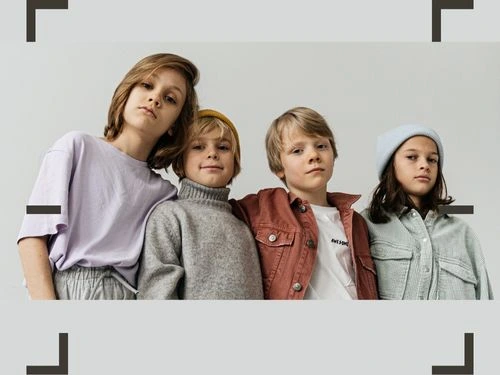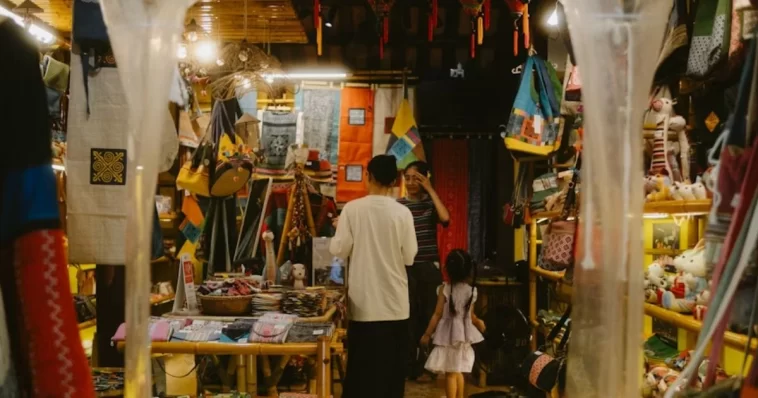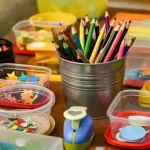Second-hand kids shopping has grown in popularity over the past decade, and it is easy to see why. Parents are becoming more budget-conscious, environmentally aware, and interested in finding unique, high-quality items for their children. Shopping second-hand not only saves money but also contributes to sustainability by extending the life of clothes, toys, and gear that might otherwise be discarded. However, navigating thrift stores, online marketplaces, and garage sales can feel overwhelming, especially for first-time buyers. This guide will provide practical tips, strategies, and insights to make second-hand shopping for kids both enjoyable and rewarding.
Second-Hand Kids Shopping: Top Benefits for Parents and Kids
Before diving into tips, it helps to understand the value of shopping second-hand. The most obvious benefit is financial. Kids grow fast, and the cost of new clothes, shoes, and toys can quickly add up. By purchasing second-hand items, parents can save significantly while still providing their children with quality products. For example, gently used baby gear such as strollers, high chairs, and cribs can often be found at a fraction of the original price. Even designer or specialty items can be more affordable when bought used.
Second-hand shopping is also environmentally responsible. The fashion and toy industries are significant contributors to waste, with numerous products ending up in landfills each year. Choosing pre-loved items reduces demand for new manufacturing and minimizes environmental impact. Kids’ clothes and toys are perfect candidates for this approach, as they are often lightly used and still in excellent condition.
Finally, second-hand shopping can be a fun and creative experience. Vintage, unique, or hard-to-find items are often available in thrift stores, consignment shops, and online marketplaces. This allows parents and kids to discover distinctive pieces that stand out from mainstream retail offerings.
Where to Shop for Second-Hand Kids’ Items
Finding quality second-hand items begins with knowing where to look. A combination of physical and online sources often yields the best results.
Thrift stores and consignment shops are classic options. National chains like Goodwill or Salvation Army provide a steady stream of affordable clothing, toys, and household items. Local consignment shops often specialize in children’s items, offering higher-quality products and a more curated selection. These stores sometimes inspect items for damage or cleanliness, providing an extra layer of peace of mind.
Online marketplaces such as eBay, Facebook Marketplace, Mercari, and Poshmark have expanded access to second-hand goods. They allow parents to search for specific items, compare prices, and read seller reviews. Some platforms even offer buyer protection policies, which can help reduce the risk of purchasing items from unknown sellers.
Garage sales, yard sales, and community swaps are ideal for local bargains. Many parents find excellent deals by attending sales in their neighborhoods or joining organized children’s clothing swaps. These events often provide opportunities to negotiate prices and build connections with other parents in the community.
Specialty resale platforms for kids are becoming increasingly popular. Websites and apps dedicated solely to children’s clothing and gear, such as Kidizen, Swap.com, and ThredUp, offer curated selections, making it easier to find items in good condition. These platforms often categorize products by size, brand, and condition, making the search process more straightforward.
Assessing Quality and Safety
One of the most critical aspects of second-hand shopping for kids is ensuring the quality and safety of the items. Parents should scrutinize items before purchasing.
Clothing should be inspected for holes, stains, missing buttons, and properly functioning zippers. While some minor wear is acceptable, significant damage can make the item unusable. Pay attention to the fabric quality and elasticity, especially for items such as leggings, socks, and shoes. Certain fabrics, such as cotton and denim, tend to be durable and easy to clean, making them ideal for kids.
Toys require extra scrutiny. Look for broken parts, sharp edges, and loose pieces that could pose choking hazards. Ensure battery-operated toys work correctly, and verify that age recommendations are suitable for your child. Recall lists can be checked online to confirm that older toys are safe for use.
Gear and equipment such as strollers, car seats, and cribs must meet current safety standards. Car seats, for example, have expiration dates and should never have been involved in a car accident. Verify safety certifications and inspect for any structural damage. For cribs, ensure that slats are intact, screws are tight, and paint or finishes are free from lead.
Sanitization is essential. Even items that appear clean can harbor bacteria or allergens. Clothing should be washed thoroughly before use. Toys should be disinfected, and gear like car seats should be wiped down according to the manufacturer’s instructions.
Sizing and Fit Considerations
One challenge in second-hand shopping is sizing, as children’s clothing tends to be in short supply. Buying clothes that fit now and allowing for growth is key.
Know your child’s measurements. Compare them to the size charts provided by brands or retailers. Keep in mind that sizing varies between brands, so measuring chest, waist, hips, inseam, and height is crucial. Avoid assuming that labeled sizes align perfectly with your child’s actual measurements.
Growth plan. Purchasing items that may be slightly larger can extend their use, but be careful not to buy clothes that are too big. Overly large clothing can be uncomfortable and unsafe, especially for toddlers who are learning to walk or run.

Shoes and footwear require precise sizing. While some parents may consider buying slightly larger shoes for growth, ensure there is enough room without causing instability. Footwear that is too loose can lead to trips and falls, while tight shoes can hinder development.
Seasonal planning can also help. Buy ahead for the next season, especially for items that may be difficult to find later. Winter coats, boots, and special-occasion outfits are often more affordable when purchased out of season.
Budgeting and Smart Shopping Strategies
Second-hand shopping allows for flexible budgeting, but having a strategy to maximize savings and value is beneficial.
- Set a clear budget before heading out or browsing online. Know how much you are willing to spend on individual items or categories. This prevents overspending on unnecessary purchases and encourages the careful selection of items.
- Prioritize essentials. Focus on items your child needs most, such as everyday clothing, shoes, and gear. Toys, books, and decorative items can be secondary purchases but may still offer significant savings if chosen wisely.
- Track sales and promotions. Thrift stores and consignment shops frequently offer discounts, half-price days, or membership rewards. Online platforms may provide seasonal sales or coupon codes. Taking advantage of these opportunities can reduce costs substantially.
- Negotiate when possible. Many second-hand sellers are open to negotiation, especially at garage sales, yard sales, or smaller online marketplaces. Politely offering a lower price can yield impressive savings.
- Buy versatile pieces. Opt for items that can be mixed and matched with existing wardrobe staples. Neutral colors, classic designs, and durable fabrics extend usability and reduce the need for frequent replacements.
Teaching Kids About Second-Hand Shopping
Second-hand shopping can be more than just a cost-saving measure. It can also serve as a valuable learning opportunity for children.
- Involve your child in the process. Allow them to choose items, try on clothes, and explore different toys. This teaches decision-making skills, independence, and responsibility. It also encourages them to appreciate quality over quantity.
- Discuss sustainability. Explain the environmental benefits of buying pre-loved items. Children are more likely to develop eco-conscious habits when they understand the positive impact of reusing and recycling products.
- Encourage gratitude and respect. Emphasize that the items they are using were once loved by someone else. This mindset can cultivate appreciation and reduce the likelihood of wasteful habits.
- Create a swapping culture. Organize small exchanges with friends or relatives. Kids can trade clothes, toys, and books, turning second-hand shopping into a social and enjoyable activity.
Online Shopping Tips
Shopping for second-hand items online requires extra attention to detail. Here are some tips to make the process smoother and safer.
- Read descriptions carefully. Sellers often provide details about condition, brand, and measurements. Pay close attention to any mentions of wear or defects.
- Examine photos closely. Look for signs of damage, discoloration, or missing pieces. Multiple angles and close-up shots provide better insight into the item’s condition.
- Check seller ratings and reviews. Reliable sellers often have a history of positive feedback. Platforms like eBay, Poshmark, and Mercari allow buyers to see ratings and comments from previous transactions.
- Understand return policies. Some online marketplaces offer limited or no returns for second-hand items. Knowing the policy beforehand reduces risk and ensures you are comfortable with your purchase.
- Be cautious with payment. Use secure payment methods provided by the platform. Avoid direct bank transfers or cash payments to unknown sellers, as these can be risky.
Seasonal and Event Considerations
Timing can make a significant difference in finding the best second-hand items for kids.
Off-season shopping often yields the best deals. Purchasing winter coats in spring or swimwear in fall can save money while allowing parents to prepare in advance.
Holiday and birthday planning benefits from second-hand shopping. Gifts, costumes, and decorations can be found at a fraction of retail prices. Shopping early reduces stress and increases the likelihood of finding high-quality options.
Back-to-school season is another opportunity to stock up on essentials. Parents can find uniforms, backpacks, shoes, and school supplies at reduced prices while avoiding last-minute rushes.
Special Considerations for Babies and Toddlers
Babies and toddlers present unique challenges for second-hand shopping. They grow quickly, and safety is a top priority.
- Focus on essentials first. Clothing, diapers, and basic gear such as cribs, strollers, and car seats are priority items. Toys, books, and accessories can be secondary considerations.
- Choose easy-to-clean fabrics. Babies are prone to spills and accidents. Soft, durable, and washable fabrics are ideal for clothing, bedding, and blankets.
- Check expiration and recall information. Car seats, cribs, and high chairs often have expiration dates and safety standards that must be followed. Avoid any items that do not meet current safety regulations.
- Buy in batches. Babies go through multiple outfits per day. Purchasing clothing in sets or in bulk often reduces the cost per item and ensures a sufficient variety.
Common Mistakes to Avoid
Even experienced second-hand shoppers can make mistakes. Avoid these pitfalls to make the most of your efforts.
- Ignoring safety standards. Never compromise on items that affect your child’s safety, such as car seats, cribs, or helmets.
- Overbuying. It is easy to get carried away by low prices. Focus on quality, necessity, and usability to avoid clutter.
- Neglecting cleanliness. Always wash or sanitize items before use, even if they appear clean. This prevents germs and allergens from affecting your child.
- Failing to check sizing. Children grow, and purchasing items that are too small or excessively large can result in waste.
Assuming all items are worth the price. Some second-hand products are overpriced or damaged to the point of being unusable. Take time to evaluate whether each purchase is genuinely valuable.
The Lasting Benefits of Second-Hand Shopping for Kids
Second-hand shopping for kids offers numerous benefits, from saving money to supporting sustainable practices. With a thoughtful approach, parents can find high-quality clothing, toys, and gear while teaching children important values such as responsibility, gratitude, and eco-consciousness. By knowing where to shop, assessing quality and safety, considering sizing, and planning strategically, second-hand shopping can become a rewarding and enjoyable part of family life. Whether browsing thrift stores, attending local swaps, or exploring online marketplaces, savvy parents can discover treasures that meet their child’s needs and their family’s budget. Embracing pre-loved items not only benefits children today but also fosters a mindset of sustainability and mindfulness that can last a lifetime.



